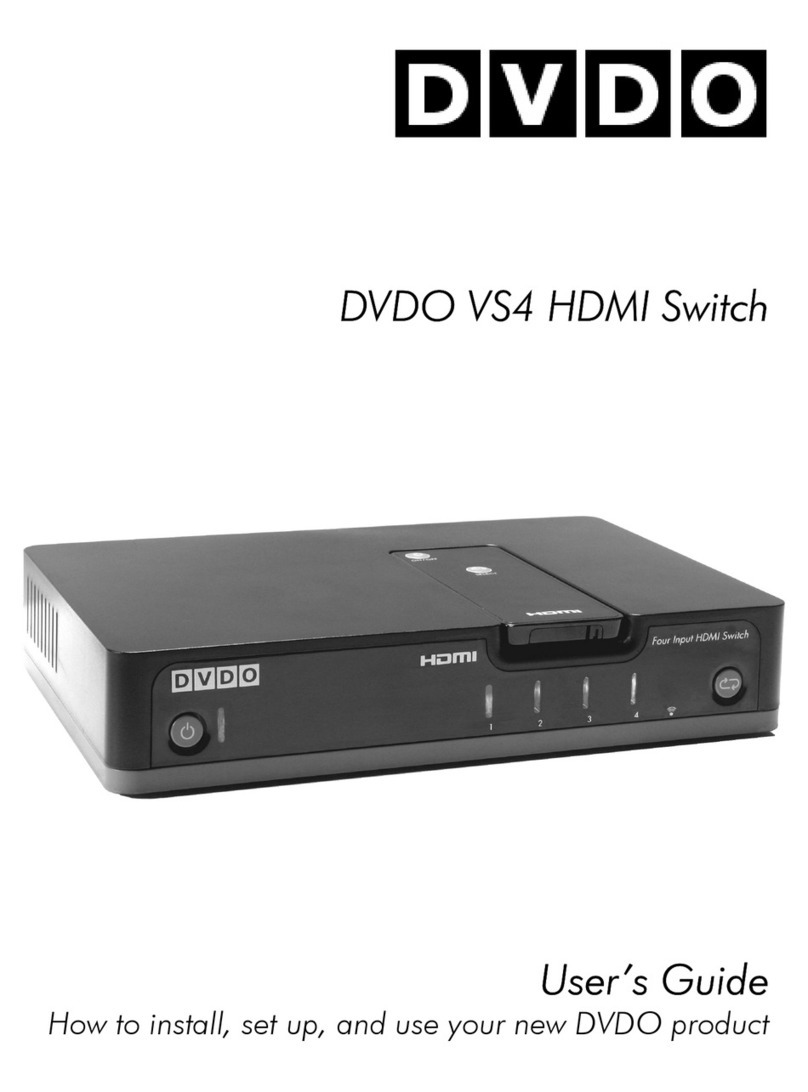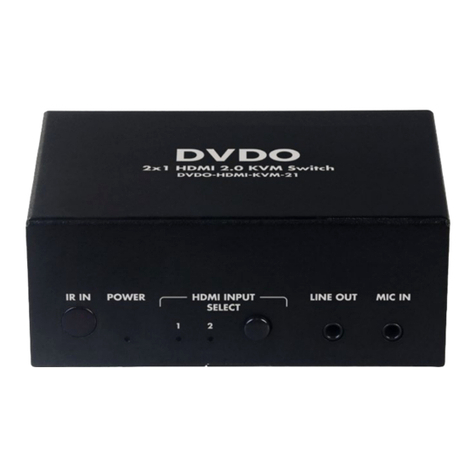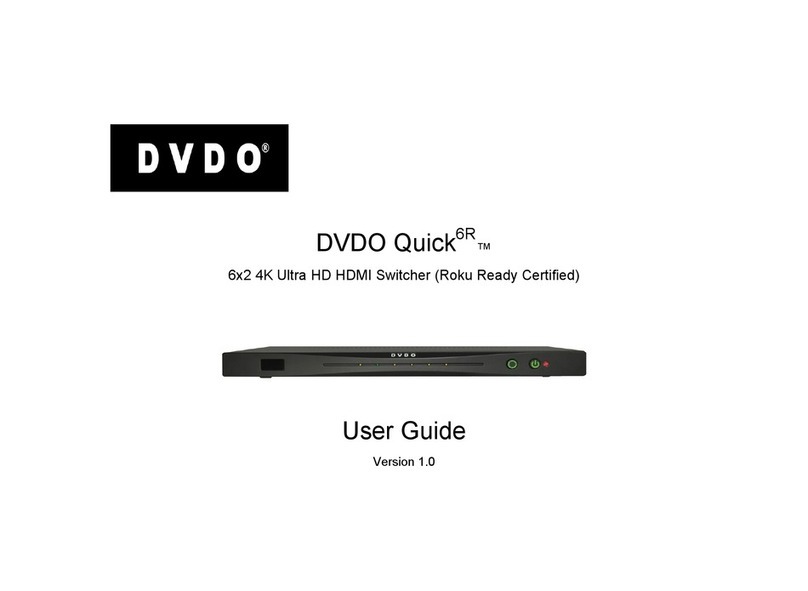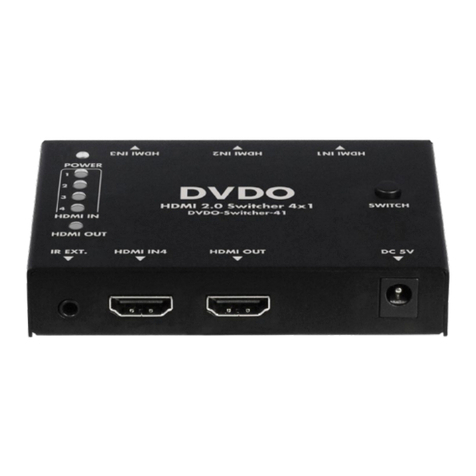DVDO Quick63 A.04
Contents
Overview......................................................................................................................... 4
Key features................................................................................................................. 4
In the Box..................................................................................................................... 4
InstaPrevue Visual Switching Technology ................................................................... 5
InstaPort S Single-second Switching Technology........................................................ 6
Input/Output.................................................................................................................... 6
Front Panel .................................................................................................................. 6
Back Panel................................................................................................................... 7
Connections.................................................................................................................... 7
AVR via HDMI and AVR via S/PIDF Modes................................................................. 7
Mirror Mode................................................................................................................ 10
Audio Return Channel (ARC)........................................................................................ 13
Remote Control............................................................................................................. 14
On Screen Display Menu System ................................................................................. 15
Updating Firmware........................................................................................................ 21
To upgrade firmware using the On-screen-display (preferred)................................... 21
To upgrade firmware using the firmware update button............................................. 22
Serial Control................................................................................................................ 23
Troubleshooting: ........................................................................................................... 23
Specifications................................................................................................................ 28
FCC Interference and Compliance Statement .............................................................. 30
Warranty ....................................................................................................................... 31
General Warranty Terms............................................................................................ 31
DVDO Products Warranty Period............................................................................... 31
System Warranty........................................................................................................ 31
Obtaining the Warranty Service ................................................................................. 32
International Warranty................................................................................................ 32
Limitation of Liability................................................................................................... 33
Disclaimer of Warranty............................................................................................... 33
Getting Help.................................................................................................................. 34
Legal notices................................................................................................................. 34































